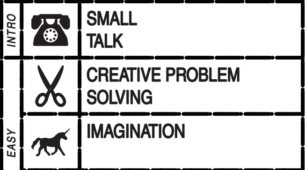For this week’s critical play I’ll be discussing Stardew Valley. I am a little pressed for time so I did not actually play Stardew Valley this week, but I think my 40+ hours on steam are enough for me to discuss this game critically.

Stardew Valley is a farming and life sim for casual audiences, released by developer ConcernedApe to roaring success back in 2016. I have the game on PC, but I’m sure it’s on all platforms. After reading the excerpt from Shira Chess’s “Play Like a Feminist”, my interpretation of playing like, as a straight man, is that it presents a new permission structure for what can be culturally celebrated in games. It’s okay to like hardcore action games, but you don’t have to, there are other things out there. Playing like a feminist means acknowledging that play is important for everyone, and that we don’t need to throw out gaming as a genre because there is so much more that it offers than the stereotypically toxic and hypermasculine games many think of. Stardew Valley is an incredible game which contributes to the space of feminist games by delivering a game that is structurally feminist, and one that celebrates community, relationships, and the emotional labor required to maintain these.
Stardew Valley is what Shira Chess referred to as “structurally feminist” because it does not conform to the traditional climax-centered narrative structure pervasive across different mediums. Stardew Valley is a game about the little moments: watering your plants, buying seeds at the store, making conversation with someone you ran into at town square, fishing, etc. By celebrating these moments, Stardew Valley is choosing to operate under the feminist permission structure, and is able to deliver a new fresh experience that resonated with millions of people.
In order to succeed in Stardew Valley’s relationship system, you have to show up for your fellow villagers. You need to talk to them often, bring them gifts, learn what gifts they like, do favors, and so on. It takes an incredible amount of work to break through with certain characters. Yet, it is the process of growing closer with the characters that delivers the fun of the game. The slight challenge of the emotional labor is rewarded with narrative moments that truly make you grow attached to these characters. By valuing these moments, Stardew Valley is rejecting the toxic gaming culture that pushes for monotony in its hypermasculinity. I believe that Stardew Valley’s rejection of hypermasculinity, in a market saturated with that type of game, was a big reason for its success. It demonstrated that there are other types of gamers than just the stereotypical, and there is strong demand for games that are willing to try something new and push norms.
There is nothing wrong with games that feature violence, action, and adrenaline-pumping gameplay, but there is something very wrong with an industry that only knows how to produce games like this. Embracing feminism in gaming means letting go of constraints, and embracing true creative freedom in video game design. Games should be free to experiment with narrative structure, identity, culture, gender, and sexuality with the same degrees of freedom that they do with aesthetics, mechanics, and sound design. Games let us design our own worlds, which can be an extremely powerful tool to break through cultural conditioning because we are able to envision worlds unlike ours, ones that are free from the dominant systems of oppression of today. By embracing feminism and challenging norms in the games we play and design, we can expand people’s understanding of what is possible in the world.


